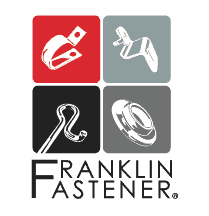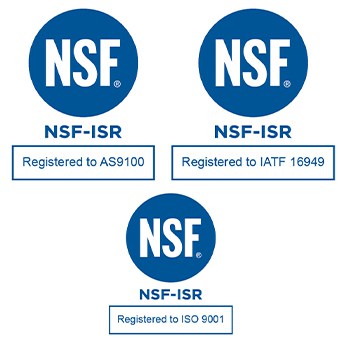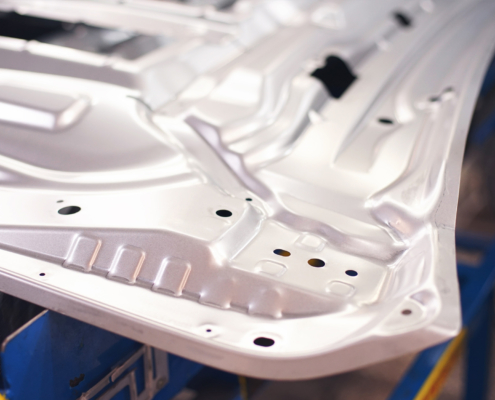 https://franklinfastener.com/wp-content/uploads/2024/01/Four-Slide-Machine-Stamping-Process.jpg
1250
2000
Abstrakt Marketing
/wp-content/uploads/2022/12/fastener-logo1-01.png
Abstrakt Marketing2024-01-24 14:19:452025-04-01 10:50:10Four-Slide Machine Stamping Process
https://franklinfastener.com/wp-content/uploads/2024/01/Four-Slide-Machine-Stamping-Process.jpg
1250
2000
Abstrakt Marketing
/wp-content/uploads/2022/12/fastener-logo1-01.png
Abstrakt Marketing2024-01-24 14:19:452025-04-01 10:50:10Four-Slide Machine Stamping ProcessPros and Cons of Different Fastening Methods
In the vast world of manufacturing, where precision and reliability are paramount, the choice of fastening method can make all the difference. Fasteners might seem like small components, but they play an essential role in holding together the various parts that constitute everything from electronics to automobiles. As a business owner, it’s crucial to understand the diverse options available and their respective advantages and drawbacks. In this blog, we’ll explore the universe of fastening methods, diving into the pros and cons of each to help you make informed decisions for your manufacturing needs.

Screws and Bolts
Screws and bolts are perhaps the most ubiquitous fasteners in manufacturing. They provide excellent holding power and are available in a wide range of sizes and materials, making them suitable for diverse applications. Metal fasteners, especially those made of high-grade alloys, offer exceptional strength and corrosion resistance.
Pros of Screws and Bolts
Screws and bolts stand out for their exceptional strength and durability, making them versatile options for a wide array of materials. Their advantage lies in easy adjustments, allowing for effortless tightening or loosening. Furthermore, they exhibit excellent resistance to shear forces, reinforcing their reliability in various applications.
Cons of Screws and Bolts
However, screws and bolts come with certain drawbacks. They demand pre-drilled holes, which could compromise material integrity. Their installation process can be time intensive, affecting overall productivity. Stripped threads pose a risk, potentially undermining the fastening efficacy. Additionally, their utility may be restricted in applications with limited available space.

Welding
Welding involves fusing two materials together using heat. It’s a common choice for joining metal components and offers exceptional strength when executed correctly.
Pros of Welding
Welding offers a host of advantages, most notably its ability to create robust and permanent bonds. With no need for external fasteners, it lends a clean and polished appearance to products. It excels in high-stress scenarios and accommodates metals with differing compositions, underscoring its adaptability across a wide range of applications.
Cons of Welding
However, welding is not without its drawbacks. It necessitates specialized equipment and skilled labor, potentially increasing operational costs. Disassembly options are limited and often irreversible, making modifications challenging. The heat-affected zone during welding can compromise the strength of the surrounding material. Furthermore, inadequate control can lead to distortion, affecting the integrity of the final product.

Rivets
Rivets are permanent mechanical fasteners that are often used to secure metal components. They are particularly valuable in applications requiring high load-bearing capacities.
Pros of Rivets
Rivets offer a series of advantages, prominently their ability to establish sturdy and dependable joints. Their resilience against vibrations and torsion makes them a valuable choice for applications subjected to dynamic forces. Rivets shine in scenarios with limited access, enabling secure connections in hard-to-reach areas. Additionally, their installation doesn’t demand specialized equipment afterward, streamlining the manufacturing process.
Cons of Rivets
Rivets come with their own set of limitations. They necessitate pre-punched holes, which could potentially compromise the structural integrity of the material. Their visibility from both sides might have aesthetic implications, affecting the overall appearance of the final product. Furthermore, the options for disassembly and reassembly are restricted, making modifications challenging. In large-scale projects, the time-consuming nature of rivet installation can be a significant factor to consider.

Clips and Clamps
Clips and clamps offer a unique approach to fastening, allowing for temporary or semi-permanent connections.
Pros of Clips and Clamps
Clips and clamps present a range of benefits. Their installation is swift and uncomplicated, saving valuable time during assembly. Being reusable and adjustable enhances their versatility, accommodating changing requirements. They minimize damage to the materials being joined, preserving their integrity. Well-suited for applications involving frequent assembly and disassembly, clips and clamps facilitate seamless adjustments and modifications over time.
Cons of Clips and Clamps
However, clips and clamps do come with certain drawbacks. They might not offer the same degree of strength as alternative fastening methods, potentially affecting the overall durability of the joint. Their load-bearing capacity is limited, making them less suitable for applications that involve substantial forces. Aesthetic concerns arise due to the visibility of attachments, impacting the final visual appeal of the product. Additionally, clips and clamps are not ideal for high-stress scenarios, where their reliability could be compromised.

Snap-Fit Connections
Snap-fit connections involve using the inherent flexibility of materials to create secure joints without the need for additional fasteners.
Pros of Snap-Fit Connections
Snap-fit connections offer a range of advantages. They stand out as a cost-effective solution by eliminating the necessity for external fasteners, thereby streamlining production costs. The assembly process is swift and straightforward, contributing to overall efficiency. Particularly well-suited for mass production and automated assembly, snap-fit connections expedite large-scale manufacturing processes. Beyond functionality, they can also enhance product aesthetics, providing a visually appealing design that complements functionality.
Cons of Snap-Fit Connections
Snap-fit connections do come with their share of limitations. They are confined to specific materials possessing the necessary flexibility, restricting their versatility across various applications. Over time, joints might experience weakening due to fatigue, potentially undermining the long-term durability of the connection. While effective for many scenarios, snap-fit connections are less appropriate for applications involving substantial loads, where their strength might prove insufficient. Moreover, the intricacies of design can impact the reliability of snap-fit connections, necessitating careful consideration of the intended use.
Offering Metal Clips and Clamps for Multiple Industries
Franklin Fastener offers metal fasteners and other products that meet the needs of multiple industries. Learn more about who we serve today.
Franklin Fastener: A Leading Provider of Metal Clip Fasteners
Franklin Fastener is a trusted supplier of engineered solutions, offering an extensive range of metal stamping products that cater to diverse industries. With a customer-oriented approach, our team offers a wide variety of metal clip fasteners that meet the needs of our clients, including:
We also offer customizable solutions that build a product to meet your specifications. Contact us today to learn more about our industry-leading products.
Related Postings
 https://franklinfastener.com/wp-content/uploads/2024/01/Four-Slide-Machine-Stamping-Process.jpg
1250
2000
Abstrakt Marketing
/wp-content/uploads/2022/12/fastener-logo1-01.png
Abstrakt Marketing2024-01-24 14:19:452025-04-01 10:50:10Four-Slide Machine Stamping Process
https://franklinfastener.com/wp-content/uploads/2024/01/Four-Slide-Machine-Stamping-Process.jpg
1250
2000
Abstrakt Marketing
/wp-content/uploads/2022/12/fastener-logo1-01.png
Abstrakt Marketing2024-01-24 14:19:452025-04-01 10:50:10Four-Slide Machine Stamping Process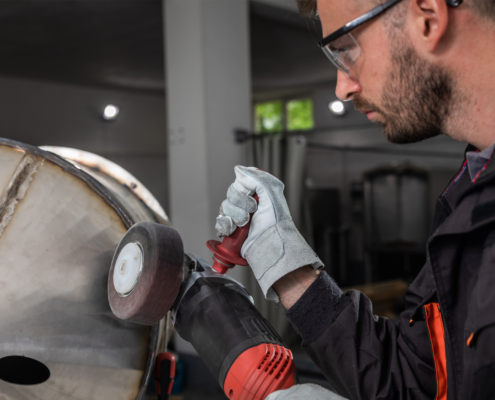 https://franklinfastener.com/wp-content/uploads/2024/01/Improve-Component-Performance-With-These-Metal-Polishing-Techniques.jpg
1250
2000
Abstrakt Marketing
/wp-content/uploads/2022/12/fastener-logo1-01.png
Abstrakt Marketing2024-01-23 16:11:442025-04-01 10:50:10Improve Component Performance With These Metal Polishing Techniques
https://franklinfastener.com/wp-content/uploads/2024/01/Improve-Component-Performance-With-These-Metal-Polishing-Techniques.jpg
1250
2000
Abstrakt Marketing
/wp-content/uploads/2022/12/fastener-logo1-01.png
Abstrakt Marketing2024-01-23 16:11:442025-04-01 10:50:10Improve Component Performance With These Metal Polishing Techniques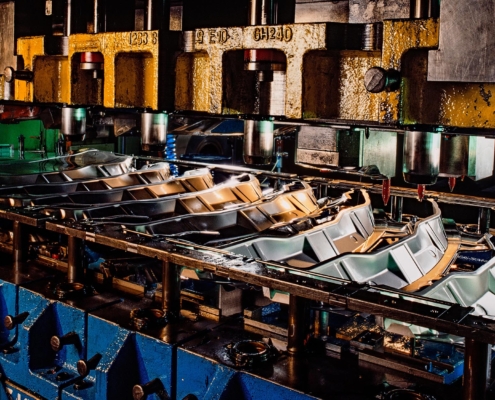 https://franklinfastener.com/wp-content/uploads/2023/11/Industrial-press-for-sheet-metal-stamping.jpg
1250
2000
Abstrakt Marketing
/wp-content/uploads/2022/12/fastener-logo1-01.png
Abstrakt Marketing2023-11-14 09:00:002025-04-01 10:50:11Overcoming Common Challenges in Metal Stamping: Solutions and Best Practices
https://franklinfastener.com/wp-content/uploads/2023/11/Industrial-press-for-sheet-metal-stamping.jpg
1250
2000
Abstrakt Marketing
/wp-content/uploads/2022/12/fastener-logo1-01.png
Abstrakt Marketing2023-11-14 09:00:002025-04-01 10:50:11Overcoming Common Challenges in Metal Stamping: Solutions and Best PracticesAbout Us
Franklin Fastener is an industry-leading provider of engineered metal products. From concept to completion, our experts provide our clients with the highest service levels.
